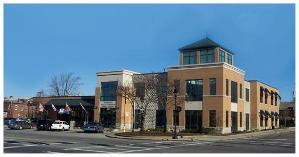 Data-driven voter outreach has become a crucial component of modern political campaigns, and Wadsworth Public Library (WPL) recently illustrated that the analytics tools that underpin those efforts can also help libraries get-out-the-vote.
Data-driven voter outreach has become a crucial component of modern political campaigns, and Wadsworth Public Library (WPL) recently illustrated that the analytics tools that underpin those efforts can also help libraries get-out-the-vote.
In a narrative that has become all too familiar, the Medina County, Ohio library had faced steady declines in state funding since 2001, and steep budget reductions of $500,000 when the recession began in 2008. Cumulative losses during the past decade totaled $2 million, resulting in cuts to operating hours, staff, and programs.
Needing to secure additional funding, WPL went to voters in its community, placing a 1.25-mill levy on local primary election ballots in March 2012. The library’s campaign efforts may have been hindered somewhat by confusion over the Ohio primary schedule—two separate bills would have moved the state’s primary election to June or May; it was ultimately held in March. But it was nonetheless discouraging when the levy was defeated 53.8 percent to 46.2 percent in the March vote.
The November 2012 presidential election offered another opportunity, but WPL staff and volunteers, led by Director C. Allen Nichols, realized that they might need a more targeted approach for voter outreach. Nichols had met Sandra Swanson, president of market analytics and consulting agency OrangeBoy at the 2011 LJ Director’s Summit in Columbus, OH. WPL hired the company to help.
“In this election cycle, we thought, we have the voter list that we used to send a direct mail pieces during the March primary. I wonder if Sandy [Swanson] could take a look at who our cardholders are who are also registered voters, and then really target our levy community folks,” explained Nichols. “They’re cardholders, they’re our friends, they come in and use us.”
OrangeBoy generally specializes in customer segmentation studies, data analytics, and facilitating the collection of primary research, such as consumer surveys. And libraries generally use this information to tailor collections, services, and programs to the preferences of their patrons, or for outreach efforts geared toward turning casual users into more frequent users, for example. Swanson noted that she doesn’t consider the company levy experts or political consultants, but the data that Nichols needed was relatively straightforward.
“Certainly one approach would be to identify voters through public voter registration files and match that with their cardholder database,” she said. This would “identify cardholders who are registered to vote, and also voters who are not cardholders.”
Arguments could be made for targeting either group in an effort to raise awareness. Existing cardholders presumably already support the library. So, reaching out to non-cardholders to make the library’s case could encourage them to vote for the levy. However, after reviewing the data, WPL decided instead to play to their strength with a highly targeted get-out-the-vote effort aimed at their existing supporters.
“They knew how many cardholders are in all of these different geographic areas,” she explained. “They were able to do some quick math and said, we would have passed that levy if we had just been able to get more people to go and vote. That was the strategy they decided to employ. With limited resources, they decided to really focus on their core customer base.”
Millage for the levy was adjusted down to 1, volunteers worked with the library to raise awareness among users, and the levy passed with 55.6 percent of the vote—a nine-point swing compared with the election in March. [EDIT: according to additional information provided by WPL, this levy will cost $31.52 per year for each $100,000 of appraised property value, and it is expected to raise slightly more than $607,000 based on various reductions that property owners will receive].
Based on the collected data, Nichols said that WPL has plans to target specific programming to neighborhoods with concentrations of patrons with children’s cards or teen cards, for example.
“With passage of the levy we now can begin some of the services, spending money on some of the things we weren’t able to do before,” he said.
In an earlier version of this story, the headline stated the millage value of the levy, rather than the amount it is expected to raise.



That would be a 1.25-mill levy in March and a 1-mill levy in November. Mills are not the same thing as millions of dollars. Thanks!
Sorry about that Janet. Looks like I made the correction too hastily after your e-mail yesterday. It’s fixed now. Thanks!
Matt, what were the special targeted programs? It sounds as though the library intends to serve specific neighborhoods with concentrations of children and teens – how will they do that without taking library services out of the library?